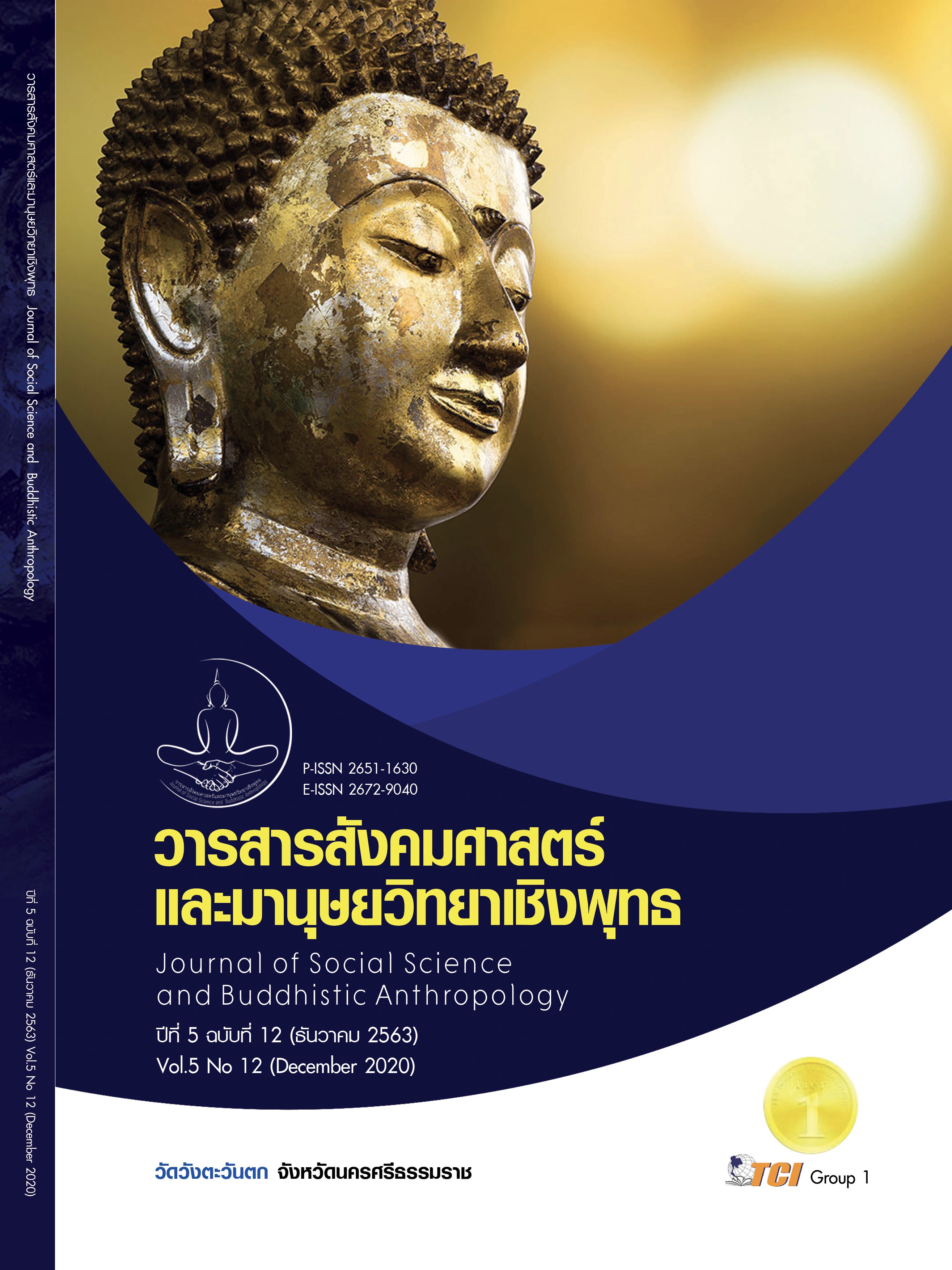THE ANTECEDENTS OF ONLINE RELATIONSHIP MARKETING THAT INFLUENCE CUSTOMER E-LOYALTY IN MOBILE BANKING SERVICES
Keywords:
Antecedent Factors, Online Relationship Marketing, Customer Engagement, E-Loyalty, Mobile BankingAbstract
The objective of this study were 1) to study the antecedents of online relationship marketing that influenced the customer engagement and e-loyalty in mobile banking services; 2) to check the consistency of online relationship marketing model that influenced customer engagement and e-loyalty in mobile banking services. The study had a mixed method research design that used both qualitative research and quantitative research. Qualitative research used 7 in-depth interviews with mobile banking officer from top 7 banks for mobile banking in Thailand to confirm a research model and developing the quantitative instrument. Quantitative research had used 400 mobile banking users been collected through an online survey. The data analysis methods were Confirmatory Factor Analysis (CFA) and Path Analysis (PA) to testing research hypotheses. The result shows that the result was consistent with the empirical data. All six Goodness of fit model passed the accepted criteria as x2= 190.272, x2/d.f.= 2.503, RMSEA= 0.061, CFI= 0.965, TLI= 0.952, SRMR= 0.04 and found that e-quality and customer perceived had the influence on relationship quality with statistical significance at the level of 0.01 and 0.05 and relationship quality had the influence on customer engagement and e-loyalty with statistical significance at the level of 0.01 and 0.05. The finding of this study was to understand the factors which influenced E-loyalty in Mobile Banking services, for the purpose of developing services of bank and related business to meet customer’s needs.
References
ธนาคารแห่งประเทศไทย. (2562). Big Data และข้อมูลการชำระเงิน: ขุมทรัพย์ที่รอการค้นพบ. เรียกใช้เมื่อ 3 กุมภาพันธ์ 2563 จาก https://www.bot.or.th/Thai/Research AndPublications/DocLib_/Article_09May2019.pdf
ธนาคารไทยพาณิชย์. (2563). โปรดระวัง!! กลุ่มมิจฉาชีพที่โทรศัพท์หาคุณและอ้างตัวเป็นเจ้าหน้าที่ตำรวจหรือเจ้าหน้าที่ธนาคาร เพื่อหลอกให้คุณทำโอนเงินบน Internet Banking ไปยังบัญชีคนร้าย. เรียกใช้เมื่อ 1 กันยายน 2563 จาก https://www. scbeasy.com /v1.4/site/presignon/th/tps/tps_scr.asp
ศูนย์วิจัยธนาคารออมสิน. (2562). Mobile Banking ตัวช่วยแห่งยุคดิจิทัล. เรียกใช้เมื่อ 18 มิถุนายน 2563 จาก https://www.gsbresearch.or.th/wpcontent/uploads /2019/12/IN_Mobile_Banking_11_62_inter_info_New.pdf
Bansal, H. S. et al. (2005). "Migrating" to New Service Providers: Toward a Unifying Framework of Consumers' Switching Behaviors. Journal of the Academy of Marketing Science, 33(1), 96-115.
Boateng, S. L. (2018). Online relationship marketing and customer loyalty: a signaling theory perspective. International Journal of Bank, 37(1), 226-240.
Chiu, J. L. et al. (2017). Challenges and factors influencing initial trust and behavioral intention to use mobile banking services in the Philippines. Asia Pacific Journal of Innovation and Entrepreneurship, 1(2), 246-278.
Cochran, W. G. (1977). Sampling Techniques 3rd Edition. 3rd ed. New York: John Wiley and Sons Inc.
Creswell, J. & Clark, V. P. (2007). esigning and Conducting Mixed Methods Research. Thousand Oaks. California: Sage.
Dick, A. S. & Basu, K. (1994). Customer loyalty: towards an integrated framework. Journal of the Academy of Marketing Science, 22(2), 99-113.
Farooqi, S. R. (2014). The Construct of Relationship Quality. Journal of Relationships Research, 5(2), 1-11.
Grönroos, C. (2004). The relationship marketing process: communication, interaction, dialogue, value. Journal of Business & Industrial Marketing, 19(2), 99-113.
Hair, J. F. et al. (2011). PLS-SEM: Indeed a silver bullet. The Journal of Marketing Theory and Practice, 19(2), 139-152.
Hinson, R. et al. (2019). Antecedents and consequences of customer engagement on Facebook: An attachment theory perspective. Journal of Research in Interactive Marketing, 13(2), 204-226.
Ho, S. Y. (2016). Antecedents and consequences of relationship marketing for internet banking: A Malaysian gen-y perspective. in Doctor of Philosophy. Multimedia University.
Ittner, C. D. & Larcker, D. F. (1996). Measuring the impact of quality initiatives on firm financial performance. Advances in the Management of Organizational Quality, 1(1996), 1-37.
Khan, I. et al. (2016). The role of customer brand engagement and brand experience in online banking. International Journal of Bank, 34(7), 1025-1041.
Lawshe, C. H. (1975). A quantitative approach to content validity. Personnel Psychology, 28(4), 563-575.
Lee, G. Y. et al. (2011). Service quality, relationship quality, and customer loyalty in Taiwanese internet banks. Social Behavior and Personality, 39(8), 1127-1140.
Monferrer, D. et al. (2019). Increasing customer loyalty through customer engagement in the retail banking industry. Spanish Journal of Marketing, 23(3), 461-484.
Purnasari, H. & Yuliando, H. (2015). How Relationship Quality on Customer Commitment Influences Positive e-WOM. Agriculture and Agricultural Science Procedia, 3(2015), 149-153.
Rita, P. et al. (2019). he impact of e-service quality and customer satisfaction on customer behavior in online shopping. Heliyon, 5(10), 1-14.
Sashi, C. M. (2012). Customer engagement, buyer-seller relationships, and social media. Management Decision, 5(2), 253-272.
Sergios, D. & Nikolaos, K. (2010). Linking Trust to Use Intention for Technology-Enabled Bank Channels: The Role of Trusting Intentions. Psychology & Marketing, 27(8), 799-820.
Steinhoff, L. et al. (2019). Online relationship marketing. Journal of the Academy of Marketing Science, 47(3), 369-393.
Venkatesh, V. & Davis, F. D. (2000). A Theoretical Extension of the Technology Acceptance Model: Four Longitudinal Field Studies. Management Science, 46(2), 186-204.
Vivek, S. D. et al. (2012). Customer engagement: exploring customer relationships beyond purchase. Journal of Marketing Theory and Practice, 20(2), 127-145.






